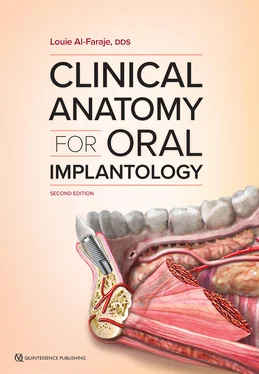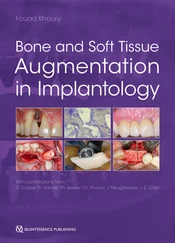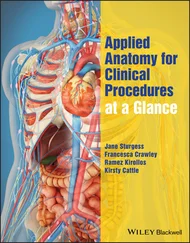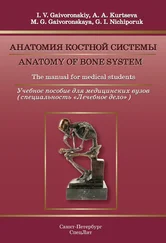The most voluminous of his books is Al-Shamil fi al-Tibb , which was planned to be an encyclopedia comprising 300 volumes but was never completed because of his death. The manuscript is available in Damascus.
His book on ophthalmology is largely an original contribution. His most famous book is The Summary of Law (Mujaz al-Qanun) . Another famous book embodying his original contribution was on the effects of diet on health, entitled Kitab al-Mukhtar fi al-Aghdhiya .

The pulmonary circulation of the blood according to Ibn al-Nafis.
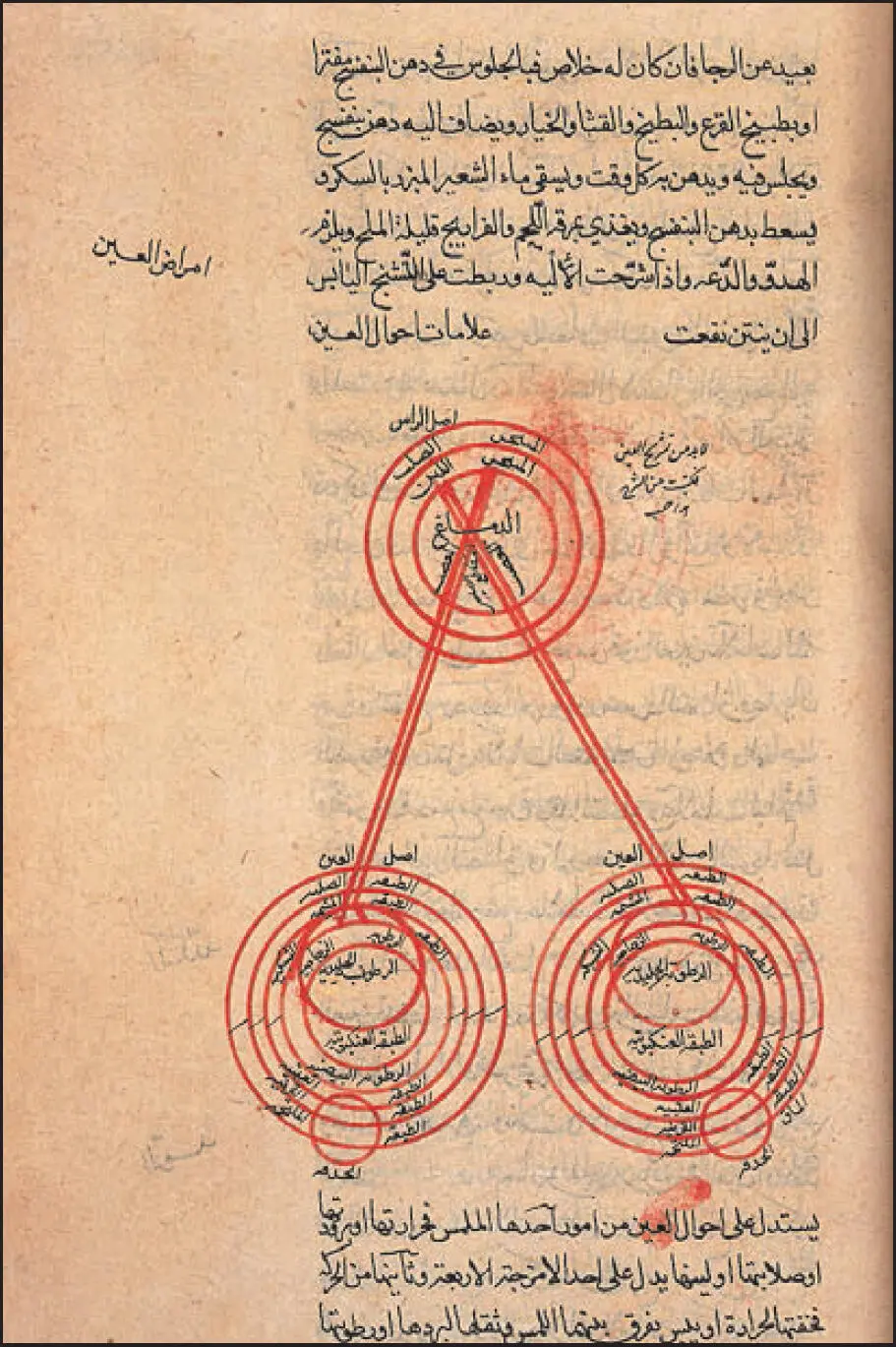
A page from the book on ophthalmology by Ibn al-Nafis.
Anatomical knowledge has always been the foundation of sound clinical medicine. It is vital not only for the safe and successful execution of surgical procedures, but also as the basis for accurate diagnosis and treatment planning. Although human anatomy itself is not a particularly dynamic field, there have been significant advancements in surgical techniques and imaging in the past several years, which is what prompted an updated edition of this atlas.
Over the past year, I have spent over 300 hours applying my clinical and teaching experience to this project, ensuring that this new edition has the utmost relevance to the clinical reality of oral implantology today. The result of this effort is an entirely new chapter on the zygomatic bone as well as extensive improvement to existing chapters, amounting to an increase of 50 pages and nearly 150 images and illustrations.
The new chapter detailing the anatomy of the zygomatic bone ( chapter 4) is especially relevant because of the recent popularity of zygomatic implants. Clinical evidence has shown significant advantages for placing implants in the zygomatic region, particularly as a way to avoid bone grafting in patients with severe maxillary bone loss, leading to the development of new techniques and indications for this approach. This new chapter provides implant dentists with clinical cases, CT and CBCT scans, and detailed illustrations that will allow them to safely and predictably offer zygomatic implant treatment to their patients. Other major changes in this new edition have been made to the chapters on the anterior and posterior mandible ( chapters 6and 7) as well as the chapter on anatomy for surgical emergencies ( chapter 9).
As in the previous edition, the aim of this book has been to present an adequate amount of anatomical material in a readable and interesting form. Every effort has been made to sequence the information in a logical manner.
The illustrations in this book are the result of very hard work and cooperation between the illustrator and myself. Nonetheless, certain anatomical landmarks are hard to illustrate in a diagrammatic format, and this leads to confusion when students and professionals are confronted with an actual specimen in the dissecting room or in the operatory. Therefore, photographs of clinical cases and dissected structures of the maxilla, the mandible, and the nasal cavity that are provided in this book show structures as they actually exist in the dissected or live body, and I am hoping that this will bridge the gap that exists occasionally between books and the “real thing.”
In addition, this book provides a good number of CT and CBCT images of those anatomical landmarks that usually do not appear in 2D imaging (ie, panoramic, intraoral, and cephalometric radiographs). I encourage the use of CBCT imaging for every dental implant surgery. The CT scan technology allows us to visualize patient anatomy and pathology like never before. With these images, we can measure the exact distance available for implant placement under or above certain anatomical landmarks, determine the exact bone density, measure precisely the width of the available alveolar ridge, and select the most suitable locations for the planned implants. This leads to improved treatment planning as well as reduced morbidity and liability.
It is my hope that these illustrations, CT images, photographs, and text will simplify the learning and execution of implant-related surgical procedures in a region of the body that presents special topographic and anatomical difficulties.
To God, the creator of the perfect human body, who has made all my projects possible through his guidance and gracious love.
To my parents Omar Al-Faraje and Nadia Al-Rifai, whose guidance and nurturing instilled in me the quest for perfection.
To my wife Rana and my children, Nadia, Omar, and Tim. Their smiles and inspiration provide me the fortitude and drive in my life. I am very blessed.
To my brother Tarek and my sisters Elma and Razan. You are my friends in the journey of life.
To my dedicated teammates at the California Implant Institute and Novadontics. You have been showing dedication to your jobs on a daily basis for years by devoting more personal time to your work, volunteering for special assignments, and agreeing to be on call 24/7 for after-hours customer inquiries. Very few companies were built by a single person who had no help. It takes a team of devoted workers to make a company a success. Thank you.
My special thanks go to Dr Christopher Church for his contribution to the nasal and sinus anatomy sections of the book. It is a privilege to have a friend like him.
My deepest thanks to Bill Hartman and Marieke Zaffron from Quintessence Publishing for the opportunity to educate my colleagues on the special anatomical considerations for surgical oral implantology. I am very fortunate to have such highly skilled and professional editors.
To my patients, without them I would not have been able to compile the clinical photographs I have. They make my profession so enjoyable and rewarding.
To all of my students at the California Implant Institute. It is always a pleasure and an honor to share with you my knowledge and expertise in implant dentistry. For the last 18 years, my greatest professional joy has been interacting with my students and colleagues at the California Implant Institute.
I am also particularly grateful to the illustrators who worked on this book. Many hours were spent and countless emails sent back and forth to produce these specific illustrations.
1
ARTERIES, VEINS, AND INNERVATION OF THE MAXILLA AND THE MANDIBLE
This chapter describes the following anatomical landmarks and their relevance to implant-related oral surgical procedures: the external carotid artery, the maxillary artery, the pterygopalatine fossa, the veins of the head, and the trigeminal nerve.
The arteries that supply blood to the face, the maxilla, and the mandible arise largely from the external carotid artery. However, branches of the ophthalmic artery (a branch of the internal carotid artery) supply the forehead, scalp, upper eyelid, and nose. The external and internal carotid arteries (Figs 1-1 and 1-2) branch off the common carotid artery at the level of the superior border of the thyroid cartilage. The external carotid artery has eight branches:

FIG 1-1 The main branches of the aortic arch.
Читать дальше
